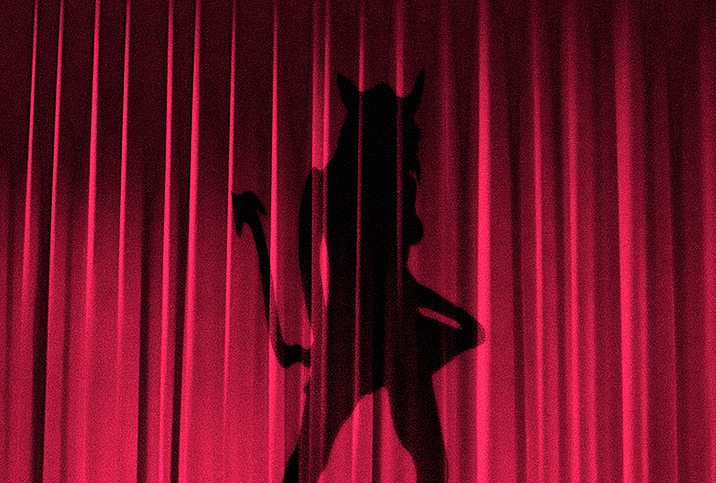How Sex Tapes (Yes, Even Yours) Went Mainstream

“Porn has gone mainstream. Now it’s like Coca-Cola or Pepsi... with dicks in it.” No one could deliver the line quite like Seth Rogen at his peak. The then-emergent comedy star was explaining to the U.S. (and frankly, as a Canadian with a still shaky grasp of the American pronunciation of “sorry,” the world) how filming yourself having sex, and even daring to make money off the video’s public consumption was, well… pretty chill.
It would be a while until popular culture caught up with the idea, but Rogen—and the 2008 film "Zack and Miri Make a Porno" he starred in alongside Elizabeth Banks— were undoubtedly ahead of their time. More than a decade later, the wider culture still isn’t as sex tape-positive as as it should be. But it’s much more accepting, even shoulder-shrugging, toward such tapes, whether or not they happen to feature celebrities. Which is, in a sense, its own kind of progress. "Zack and Miri" may not have lit the world or the box office on fire, but $43 million in global returns was still something.
Writer-director Kevin Smith’s clunky production and the poor marketing certainly deserve a share of the blame for the cult movie’s relative failure. But it’s now clear how "Zack and Miri" exposed a kernel of truth that has only grown since. In a digital porn-saturated world where even amateurs can gain followings and significant revenue, rewatching yourself and a consenting sexual partner go at it on a video you made together seems worthy of neither shame nor the kind of avant-garde attention that greeted Jeff Koons’s early-1990s era when he made fairly boring art about his sex life with his porn star spouse, Cicciolina. Instead, saccharine gags about trying to pay the bills by sleeping with your friend on camera feel almost like a given.
It wasn’t easy getting here. "Zack and Miri" was itself piggybacking on the publicity surrounding Paris Hilton’s 2004 sex tape with greasy poker player Rick Salomon. The media coverage of that tape—bemused but still condescending—arrived in the context of the ‘90s sex tape to end all sex tapes. In 1998, when Pam Anderson and Tommy Lee’s stolen honeymoon home video was an early illegal-download blockbuster, the mere words “sex tape” still held an aura of mystery, shock and titillation. To apply an overused media term that consumed TV tabloid shows of the '90s, it was straight-up scandalous.
Rewatching yourself and a consenting sexual partner go at it on a video you made together seems worthy of neither shame nor avant-garde attention.
But the very personal nature of Pam and Tommy’s video, despite its exhibition of two otherworldly specimens, was a revolution toward more realistic understanding of the sex tape phenomenon. What makes it the "Citizen Kane" of celebrity sex tapes isn’t their fame or endowment or even the way Pam (ever the underrated visualist) artfully zooms in on her new husband’s MAYHEM torso tattoo. It’s that they’re obviously, helplessly in love, body parts and all. The way she cradles his phallus while lovingly explaining that it’s hers “for the rest of my life”—especially knowing what would later come of their relationship—is heart-searing. Not for nothing, the tape is getting its own fictionalized portrayal in a Seth Rogen-produced Hulu series about their tumultuous relationship slated to shoot this year.
We’re finally starting to grasp the personal turmoil behind what used to be heavily PR-managed, gossip column-fueling fare. When an actress like Jennifer Lawrence’s private nudes were posted against her will or when we recall the way Colin Farrell (in a dreamy Irish lilt) told his then-girlfriend in a leaked tape that he could have her for “breakfast, lunch and dinner,” we understand more acutely that we’re watching real people fumble through the frequently awkward experience of sharing real physical passion. Kim Kardashian’s 2007 video with Ray J was a punchline that she and Kris Jenner savvily transformed into an oversharing empire worth billions, but now that “Keeping Up with the Kardashians” and her marriage are ending in tears, we see the human costs of that choice, too.
Weirdly (or perhaps we should’ve seen it coming), the hugely popular, delightfully nebbishy ‘90s sitcom "Mad About You'' got it all along. While always clued into nuances of modern relationships thanks to the comedic talents and chemistry of Paul Reiser and Helen Hunt, it’s still jarring to realize how little of a deal it was when the second season’s “The Tape” (written by Reiser) jumped on the trend by giving its New York City couple a similar, lower-scale drama. Having filmed themselves in the act when they were “young” and “foolish,” Reiser’s character somehow puts the tape of themselves in the hands of a video store customer.
The episode is very funny, but the funniest moment is also the most relatable, whether you’ve mounted a GoPro to an erotic night or clumsily photographed a moment when you just felt hot.
“Why can’t we watch it? How is this wrong?” Reiser reasonably wonders.
“Because,” the equally reasonable Hunt responds, “my hair was between lengths.”


















